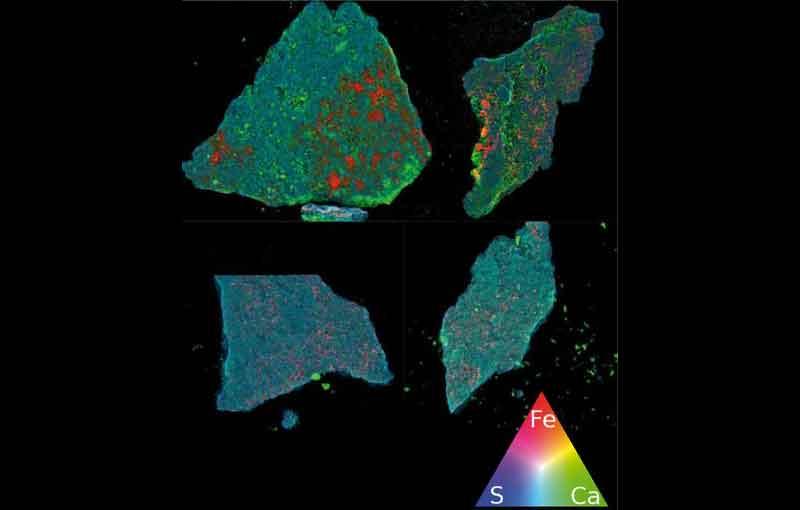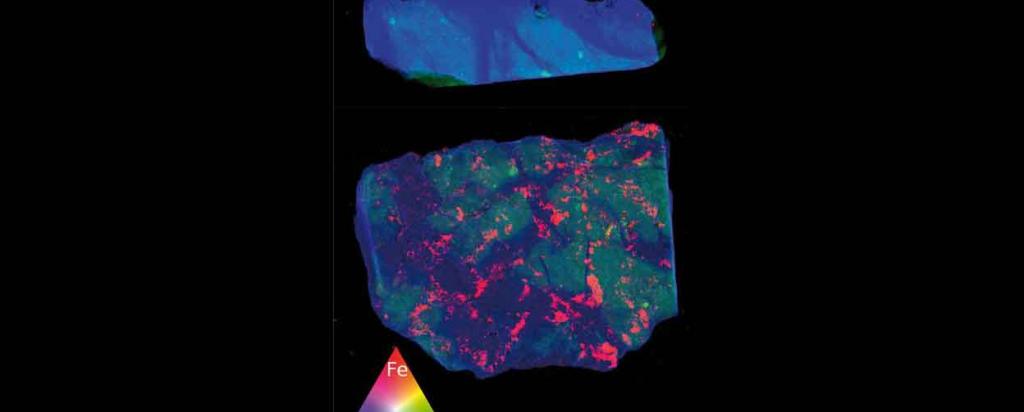

Published on the 12th November 2018 by ANSTO Staff
The use of powder diffraction and X-ray fluorescence microscopy (XFM) at the Australian Synchrotron assisted an analysis of rock art pigment as part of an international collaboration led by Griffith University on Palaeolithic cave art in Borneo.
The researchers used uranium-thorium series dating on cave paintings in Borneo to estimate the age to be as early as 40,000 years as reported in Nature.
However, the investigators wanted more information about the sources of rock art pigment, including the identification of minerals present in samples and their quantities.
The investigators noted that each technique, including scanning electron microscopy, in isolation would not have identified the constituents that produced colour.
The colour-producing mineral in mulberry plants was thought to be iron oxide hematite. This was confirmed by the powder diffraction, which identified hematite.
XFM analysis revealed that the pigments were all iron-based.
For one particular aluminium-rich sample, this suggested to the researchers that the use of ochre was associated with a bauxite deposit.
The powder diffraction data showed consistent environmental signatures of geological salts and re-precipitated calcite associated with paint surfaces.
XFM analysis of the surface and cross section of one sample from Lubang Jeriji Saleh showed sulphur and calcium did not overlay the paint in contrast to all other rock art pigments. This sample’s location was an active wash zone.
XFM instrument scientist Dr Daryl Howard and powder diffraction instrument scientist Dr Helen Brand were co-authors on the paper.
Read more and watch the video on the Griffith University website:
https://app.secure.griffith.edu.au/news/2018/11/08/oldest-known-figurative-cave-art-discovered-in-borneo/
https://www.youtube.com/watch?v=b4-rKQSLFg8&feature=youtube_gdata_player
Publication
https://doi.org/10.1038/s41586-018-0679-9